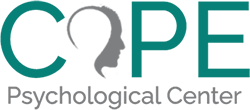What is Trauma Focused Cognitive Behavioral Therapy?
Trauma can stop a child’s world in its tracks. Whether it’s a sudden loss, chronic abuse, or living through a disaster, the impact tends to stick, quietly shaping how they think, feel, and respond. Trauma focused cognitive behavioral therapy offers a roadmap out. It’s not magic, but it’s one of the most studied and effective ways to help young people move forward with more hope and less fear.
What Is Trauma Focused Cognitive Behavioral Therapy?
Trauma focused cognitive behavioral therapy (TF-CBT) is a structured, short-term treatment specifically developed for children and adolescents who have experienced trauma. It combines well-established principles from cognitive behavioral therapy with trauma-sensitive approaches that recognize the emotional, psychological, and even physical toll traumatic events can leave behind.
Sessions typically range from 8 to 25, depending on the child’s needs. Unlike traditional talk therapy, TF-CBT includes active skill-building, guided exposure, and close collaboration with caregivers. The model walks kids through phases that first stabilize and support them, then help them process what happened, and finally guide them toward a life that feels safer and more manageable.
How Trauma Focused Cognitive Behavioral Therapy Works
TF-CBT follows a predictable structure that tends to make children feel grounded, even while doing hard emotional work. The core components include:
- Psychoeducation: Learning what trauma is and how it affects thoughts, emotions, and behavior.
- Relaxation and Regulation Skills: Practicing deep breathing, grounding, and coping tools.
- Cognitive Coping: Identifying harmful thought patterns and replacing them with healthier alternatives.
- Trauma Narration and Processing: Creating a trauma narrative in a safe, supported way.
- In Vivo Mastery: Gradual exposure to situations that have become linked with fear or distress.
- Conjoint Parent-Child Sessions: Helping caregivers understand and support the child more effectively.
- Enhancing Safety and Future Development: Developing tools for resilience and identifying strategies to feel safe moving forward.
This combination gives children a voice for their pain, while also giving them structure, tools, and support to change their internal experience.
What the Research Shows
The evidence behind trauma focused cognitive behavioral therapy is extensive. According to a large meta-analysis from ScienceDirect, TF-CBT shows strong reductions in PTSD symptoms, with improvements holding steady even a year after treatment ends.
In one study, youth who completed TF-CBT showed improvement across all core outcomes, including posttraumatic stress, depression, and behavior issues. The effect size for PTSD symptoms was especially strong, suggesting that TF-CBT does more than reduce distress. It can fundamentally shift how trauma lives in the brain and body.
Another trial highlighted its impact on depressive symptoms, particularly when trauma and depression co-occur.Though not originally designed to treat mood disorders, TF-CBT often helps lift the heavy emotional fog that trauma brings.
Caregiver involvement is another vital piece. Research shows that when parents or caregivers participate in the process, outcomes improve further. Children feel more supported, communication strengthens, and caregivers become more confident in helping their child heal.
Who Trauma Focused Cognitive Behavioral Therapy Helps
TF-CBT was designed with children and teens in mind. Most clients are between 3 and 21 years old and have experienced at least one traumatic event. That could be anything from sexual abuse to medical trauma, foster care transitions, community violence, neglect, or grief.
It works well for both individuals and small groups. It’s been adapted for use with refugee children, those in foster systems, survivors of human trafficking, and kids exposed to war or natural disasters. While the specifics of treatment may be adjusted for culture or setting, the framework remains sturdy across contexts.
TF-CBT is now used in a wide range of mental health settings, from outpatient clinics to residential treatment centers, and has been embraced internationally for its strong evidence base and focus on reducing long-term trauma effects.
How It Compares to Other Therapies
While many therapies claim to support trauma recovery, trauma focused cognitive behavioral therapy stands out because it consistently reduces posttraumatic stress symptoms to subclinical levels. This means kids don’t just feel a little better, they often no longer meet diagnostic criteria for PTSD once treatment ends.
Compared to supportive counseling or nondirective therapy, TF-CBT tends to create more robust improvements in symptoms and functioning.
Some other cognitive-behavioral interventions do show benefit, but TF-CBT remains the gold standard when a child has experienced trauma and needs both structured treatment and emotional support. It’s recommended by the National Child Traumatic Stress Network, the World Health Organization, and many national health agencies.
What Makes Trauma Focused Cognitive Behavioral Therapy So Effective
TF-CBT works because it balances structure with flexibility. It doesn’t rush a child to talk before they’re ready, but it also doesn’t stay in the safe zone forever.
It encourages gradual, supported exposure to traumatic memories, which allows the brain to process them in smaller, manageable pieces. TF-CBT also emphasizes skill-building from the very first session, giving kids real tools they can use right away when fear or shame show up. By the time trauma narration begins, the child already has a foundation of coping strategies, emotional regulation skills, and a trusted relationship with the therapist.
Caregiver involvement adds another layer of effectiveness. When non-offending parents or guardians participate, they gain a better understanding of trauma, improve their own emotional responses, and become more effective sources of support at home. This shared healing process strengthens family dynamics and helps the child feel less alone in recovery.
TF-CBT is also tailored to each individual, making space for cultural context, developmental stage, and personal resilience. That personalization keeps treatment from becoming rigid or one-size-fits-all. Instead, it becomes a collaborative effort to help the child regain a sense of safety, identity, and trust in the world.
What to Expect in Trauma Focused Cognitive Behavioral Therapy
TF-CBT is not an open-ended process. Most treatment plans fall within the 12 to 25 session range, depending on the child’s needs and the complexity of their trauma history. In the beginning, therapy focuses on building rapport, teaching relaxation skills, and explaining how trauma affects the brain and body.
As trust develops, the child is invited to create a trauma narrative, a written or spoken story about what happened. This part can feel intimidating, but it’s approached gently and always at the child’s pace. Processing the narrative in therapy helps the child reclaim the memory and reduce its emotional charge.
Toward the end of treatment, sessions shift to reinforcing progress, building future goals, and practicing what the child has learned. This phase includes joint sessions with caregivers to improve communication, foster connection, and create a shared path forward. Kids and families often leave TF-CBT not only with fewer symptoms, but with a stronger understanding of themselves and each other.
Therapy That Meets Trauma Head-On
COPE Psychological Center offers trauma focused cognitive behavioral therapy with warmth, skill, and care. Reach out to begin the healing process together.


